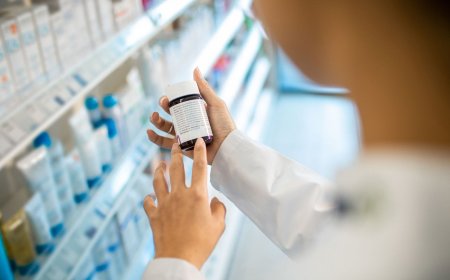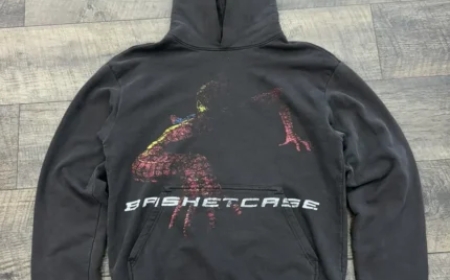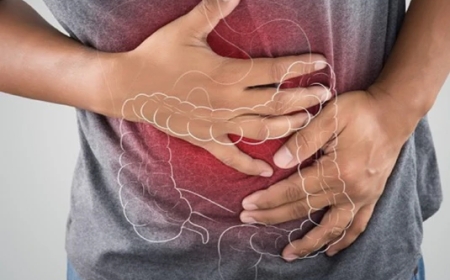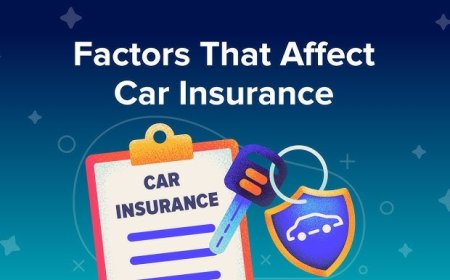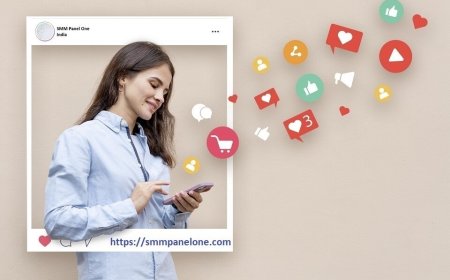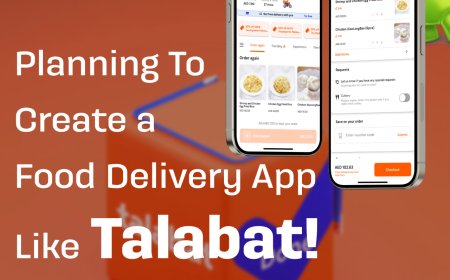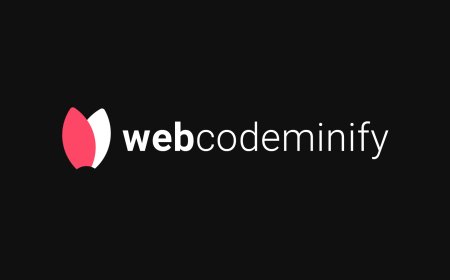How to Access Health Equity Resources in Columbus
How to Access Health Equity Resources in Columbus Health equity is not a distant ideal—it is a measurable, achievable goal rooted in fairness, access, and dignity. In Columbus, Ohio, a city of over 900,000 residents with growing cultural diversity and persistent disparities in health outcomes, accessing equitable health resources is both a right and a necessity. Despite advancements in medical tec
How to Access Health Equity Resources in Columbus
Health equity is not a distant ideal—it is a measurable, achievable goal rooted in fairness, access, and dignity. In Columbus, Ohio, a city of over 900,000 residents with growing cultural diversity and persistent disparities in health outcomes, accessing equitable health resources is both a right and a necessity. Despite advancements in medical technology and public health infrastructure, many residents—particularly those in historically marginalized communities—face systemic barriers to care, including transportation limitations, language differences, lack of insurance, and distrust in institutions. Understanding how to navigate and access health equity resources in Columbus is not just a practical skill; it is a critical step toward personal and community well-being.
This guide provides a comprehensive, actionable roadmap for individuals, families, advocates, and community workers seeking to connect with health equity services in Columbus. Whether you are a resident struggling to find affordable mental health care, a parent looking for pediatric nutrition programs, or a community organizer aiming to mobilize local resources, this tutorial equips you with the knowledge, tools, and real-world examples needed to overcome obstacles and claim the care you deserve.
Step-by-Step Guide
Step 1: Identify Your Specific Health Needs
Before seeking resources, take time to clearly define your health concern. Health equity resources vary widely—from chronic disease management to maternal support, from food access to housing-assisted wellness programs. Begin by asking yourself:
- Are you seeking preventive care, treatment, or ongoing support?
- Do you need services in a specific language or culturally responsive setting?
- Are you navigating a life stage that requires specialized care—such as pregnancy, aging, or youth development?
- Do you face barriers like lack of transportation, unstable housing, or unemployment that impact your health?
Documenting your needs helps you filter resources more effectively. For example, someone managing diabetes may benefit from free glucose testing and nutrition counseling, while a single mother may need access to WIC (Women, Infants, and Children) programs and childcare support. Clarity at this stage prevents wasted time and ensures you connect with the most relevant services.
Step 2: Map Your Geographic and Community Context
Columbus is divided into distinct neighborhoods, each with unique health profiles and available services. The city’s health disparities are often concentrated in areas such as the Near East Side, South Side, and parts of North Columbus, where poverty rates are higher and provider density is lower. Use free tools like the Columbus Public Health Community Health Assessment or Health Equity Atlas (available at columbus.gov/health) to identify which ZIP codes have the highest rates of asthma, maternal mortality, or food insecurity.
Once you know your neighborhood, locate nearby community health centers, faith-based organizations, and nonprofit clinics. For instance:
- Residents of the Near East Side can access the East Side Health Center, which offers sliding-scale primary care and behavioral health services.
- Those in the South Side may benefit from the South Side Community Health Collaborative, which partners with local churches to provide mobile clinics.
- North Columbus residents can connect with the Northland Health Initiative, focused on diabetes prevention and mental health outreach.
Map your route using public transit options like COTA (Central Ohio Transit Authority) or consider ride-sharing programs like Community Transportation Network, which offers free or low-cost rides for medical appointments.
Step 3: Locate Certified Health Equity Providers
Not all clinics offer the same level of equity-focused care. Look for organizations that have earned formal recognition for culturally competent services. In Columbus, key providers include:
- Ohio State University Wexner Medical Center – Community Health Programs: Offers bilingual care, trauma-informed services, and community health worker outreach.
- Planned Parenthood Great Rivers: Provides reproductive health services regardless of income or immigration status.
- Community Refugee and Immigration Services (CRIS): Delivers health navigation for refugees and asylum seekers, including interpretation and insurance enrollment.
- St. Francis Health Services: A federally qualified health center (FQHC) offering comprehensive care on a sliding fee scale.
Verify credentials by checking if the provider is listed on the Health Resources and Services Administration (HRSA) Find a Health Center directory. FQHCs are required to serve all individuals regardless of ability to pay and must offer language access services.
Step 4: Apply for Financial Assistance and Insurance Navigation
Many residents avoid care due to perceived cost. However, numerous programs in Columbus eliminate or reduce out-of-pocket expenses:
- Medicaid: Available to low-income adults, children, pregnant individuals, and seniors. Apply online at jfs.ohio.gov or in person at a county department of job and family services.
- Healthy Start Columbus: A city-funded program offering free prenatal and postpartum care to uninsured mothers.
- Sliding Fee Scale Programs: Offered at FQHCs like St. Francis and East Side Health Center. Income is assessed annually, and fees are adjusted accordingly—often to $0 for those below 100% of the federal poverty level.
- Pharmacy Assistance Programs: Organizations like the Columbus Area Health Education Center help residents access free or discounted prescription medications through manufacturer programs.
Many providers have dedicated “benefits counselors” who can help you complete applications, gather documentation, and appeal denials. Don’t hesitate to ask for this support—it’s part of their mission.
Step 5: Engage with Community Health Workers and Navigators
One of the most powerful tools in Columbus’s health equity ecosystem is the community health worker (CHW). These trusted, often local residents are trained to bridge gaps between clinical care and community life. They assist with:
- Scheduling appointments
- Transportation coordination
- Translating medical jargon
- Connecting to food pantries, housing aid, or job training
CHWs are embedded in nearly every major health initiative in the city. To connect:
- Visit a local FQHC and ask, “Do you have a community health worker on staff?”
- Reach out to the Columbus Department of Health’s Community Engagement Unit via their website for referrals.
- Attend a community health fair—many are hosted monthly in public libraries and churches.
CHWs do not replace doctors—they complement them. Their value lies in understanding the lived realities of the communities they serve.
Step 6: Utilize Mobile and Pop-Up Health Services
For residents who face transportation barriers, mobile health units are a lifeline. Columbus has several rotating services:
- Mobile Health Van (Columbus Public Health): Travels weekly to underserved neighborhoods offering immunizations, blood pressure checks, and diabetes screening.
- Health on Wheels: Operated by Nationwide Children’s Hospital, this van provides pediatric care, developmental screenings, and mental health support to families in public housing.
- Food as Medicine Van: A partnership between the Ohio State University College of Medicine and local farms, this van delivers fresh produce and nutrition education to food deserts.
Schedules are updated monthly. Subscribe to email alerts from Columbus Public Health or follow @ColumbusHealth on social media for real-time updates on where these vans will be next week.
Step 7: Access Mental Health and Substance Use Support
Mental health disparities are stark in Columbus. Black and Latino residents are less likely to receive timely care, and rural-adjacent neighborhoods have few providers. Fortunately, equity-focused mental health services are expanding:
- Community Mental Health Services (CMHS): Offers free or low-cost counseling, crisis intervention, and case management. No insurance required.
- Project Connect: A trauma-informed program for survivors of violence, operated by the Columbus Urban League.
- Peer Recovery Support Services: Individuals with lived experience of addiction provide guidance and connection to treatment—available through the Ohio Recovery Network and local churches.
- Telehealth Equity Program: Through OSU’s Department of Psychiatry, low-income residents can receive free video therapy sessions with culturally competent providers.
Many of these services do not require referrals. Walk-ins are welcome, and appointments can often be scheduled the same day.
Step 8: Advocate for Yourself and Others
Accessing resources is not always passive. Sometimes, you must speak up. If you encounter barriers—such as long wait times, language discrimination, or refusal of care—document the incident and escalate:
- Ask for a patient advocate at the facility.
- Contact the Columbus Civil Rights Commission if you believe you’ve been denied care based on race, ethnicity, or income.
- Join a community health coalition like Healthy Columbus 2030 to amplify systemic change.
Your voice matters. Health equity is built not only by service providers but by informed, persistent residents who demand better.
Best Practices
Build a Personal Health Record
Keep a simple, organized folder—physical or digital—with your medical history, medications, allergies, insurance details, and contact information for your care team. Many low-income residents move frequently or change providers; having this record ready prevents delays and miscommunication. Apps like MyHealthRecord (free on Android and iOS) allow you to store documents securely and share them with new providers.
Establish a Care Network
Health equity thrives in community. Identify 2–3 trusted individuals—a neighbor, a church member, a friend—who can help you navigate appointments, translate documents, or accompany you to clinics. Many residents report better outcomes when they have a “health buddy.”
Use Language Access Tools
If English is not your first language, you have the right to interpretation services. Columbus Public Health and all FQHCs provide free interpreters in over 40 languages. Never rely on family members or untrained staff for medical interpretation—it can lead to dangerous misunderstandings. Always ask for a certified interpreter before your appointment.
Know Your Rights
Under federal law (Title VI of the Civil Rights Act), healthcare providers receiving federal funds must offer language assistance and cannot deny care based on immigration status. If you are turned away, ask for the facility’s non-discrimination policy. You can also file a complaint with the U.S. Department of Health and Human Services Office for Civil Rights.
Engage in Preventive Care
Many health equity programs emphasize prevention because it reduces long-term costs and improves quality of life. Attend free screenings for blood pressure, diabetes, cancer, and depression. Columbus Public Health hosts free flu shots, mammograms, and colonoscopies annually—no ID or insurance needed.
Track Your Progress
Keep a journal of your health goals and achievements. Did you attend all your appointments? Did you start walking daily? Did you connect with a nutritionist? Tracking progress builds momentum and helps you identify what’s working. Share this with your provider—it strengthens your care plan.
Stay Informed Through Local Channels
Subscribe to newsletters from:
- Columbus Public Health
- United Way of Central Ohio
- Ohio Health Equity Alliance
- Columbus Urban League
These organizations regularly announce new programs, funding opportunities, and policy changes that impact access.
Tools and Resources
Online Directories
- 211 Ohio (dial 211 or visit 211ohio.org): A free, confidential service that connects residents to health, housing, food, and transportation resources. Available 24/7.
- HealthCare.gov – Ohio Marketplace: For those seeking subsidized private insurance. Eligibility is based on income and household size.
- Columbus Health Equity Resource Map (columbus.gov/health/equity-map): An interactive map showing clinics, food pantries, mental health services, and mobile units by neighborhood.
- FindHelp.org: A national platform with local filters for Columbus. Search by keyword—“free diabetes care,” “parenting classes,” “mental health for teens.”
Mobile Applications
- MyHealthRecord: Store and share medical records securely.
- Medisafe: Medication reminders with translation features.
- Text4Baby: Free weekly text messages with prenatal and infant care tips (opt in by texting BABY to 511411).
- HealthyColumbus: City-official app with event calendars, clinic locations, and health alerts.
Print and Community Materials
Many libraries and community centers distribute printed resource guides:
- Columbus Metropolitan Library branches offer “Health & Wellness Kits” with brochures on Medicaid, nutrition, and mental health.
- St. Francis Health Services prints multilingual flyers on chronic disease management and is available at all their locations.
- Neighborhood Associations often host monthly “Resource Fairs” with handouts and on-site sign-ups.
Training and Certification Programs
For community advocates, consider:
- Community Health Worker Certification: Offered by Columbus State Community College (free for qualifying residents).
- Health Literacy Training: Provided by the Ohio State University College of Public Health—open to all.
- Advocacy 101 Workshops: Hosted by the Columbus Urban League to teach residents how to influence local health policy.
Local Partnerships to Leverage
Many organizations collaborate to expand reach:
- Healthy Columbus 2030: A city-wide initiative with 100+ partners focused on reducing disparities by 2030.
- Columbus Food Access Coalition: Connects residents to SNAP enrollment, farmers markets, and food delivery.
- Equity in Action Network: A coalition of faith-based and nonprofit groups offering integrated health and social services.
Real Examples
Example 1: Maria, a Single Mother in the Near East Side
Maria, 32, works two part-time jobs and has two young children. She noticed her eldest son was frequently sick and struggling in school. She didn’t have insurance and felt overwhelmed. She visited her local library and picked up a health resource guide. There, she learned about the Healthy Start Columbus program and applied. Within two weeks, she was enrolled in free prenatal and pediatric care. A community health worker helped her enroll her children in Medicaid, arranged transportation to appointments, and connected her to a free parenting class. Within six months, her son’s asthma was under control, and Maria began attending nutrition workshops—now she volunteers at the same center that helped her.
Example 2: James, a Veteran with PTSD
James, 48, served in the military and returned to Columbus with untreated PTSD. He avoided clinics due to past negative experiences. He found a peer support group through the Ohio Recovery Network at a local church. The group connected him with a veteran-specific therapist through OSU’s Telehealth Equity Program. He received weekly virtual counseling and was linked to housing assistance through the Veterans Affairs Community Partnership. Today, James mentors other veterans and speaks at community forums about mental health access.
Example 3: The East Side Food as Medicine Initiative
In 2022, a coalition of doctors, farmers, and residents launched a pilot program in the East Side. Patients diagnosed with type 2 diabetes were prescribed “food boxes” containing fresh vegetables, whole grains, and culturally appropriate recipes. Each box came with a nutritionist visit. After one year, participants reduced their HbA1c levels by an average of 1.8 points—equivalent to the effect of some medications. The program has since expanded citywide and is now funded by state grants.
Example 4: The Refugee Health Navigation Project
CRIS partnered with Columbus Public Health to train 15 refugee community members as health navigators. These navigators, speaking languages like Swahili, Arabic, and Karen, now help newly arrived families enroll in Medicaid, schedule vaccinations, and understand prenatal care. One navigator, a former refugee from Somalia, helped over 200 families in her first year. Her story is now used in training for new health workers across Ohio.
FAQs
Do I need insurance to access health equity resources in Columbus?
No. Many services—including community health centers, mobile clinics, and public health programs—are available regardless of insurance status. Sliding fee scales and free programs are designed specifically for those without coverage.
Can undocumented immigrants access health services in Columbus?
Yes. Federally qualified health centers (FQHCs) and public health departments cannot deny care based on immigration status. Emergency services, immunizations, maternal care, and mental health counseling are all available to all residents.
Are there free mental health services for teens?
Yes. Organizations like Project Connect and Nationwide Children’s Hospital offer free, confidential counseling for youth ages 12–21. No parental consent is required for mental health services in Ohio for teens over 13.
How do I find a doctor who speaks my language?
Call or visit any FQHC and ask for their language services coordinator. All FQHCs in Columbus have interpreters for over 40 languages. Some clinics, like St. Francis, have bilingual providers on staff.
Can I get help with transportation to medical appointments?
Yes. The Community Transportation Network offers free rides for medical appointments. You can also use COTA’s reduced-fare program for low-income riders. Some clinics provide shuttle services—ask when you schedule your appointment.
What if I’m turned away from a clinic?
Ask to speak with a patient advocate or supervisor. If you believe you were denied care due to race, language, or income, contact the Columbus Civil Rights Commission or file a complaint with the U.S. Department of Health and Human Services. You have legal protections.
Are there free nutrition programs?
Yes. WIC, the Food Bank of Central and Eastern Ohio, and the Food as Medicine program provide free groceries, cooking classes, and nutrition counseling. No income verification is needed for some pop-up food distributions.
How do I become a community health worker in Columbus?
Enroll in the Community Health Worker Certification program at Columbus State Community College. The program is free for qualifying residents and includes paid internships. Applications are accepted year-round.
Is telehealth available for low-income residents?
Yes. OSU’s Telehealth Equity Program offers free video visits for mental health, chronic disease management, and pediatrics. All you need is a smartphone or computer with internet access.
Where can I find health resources in Spanish or other languages?
Visit columbus.gov/health/multilingual for downloadable brochures in Spanish, Arabic, Somali, and more. You can also call 211 and request materials in your preferred language.
Conclusion
Accessing health equity resources in Columbus is not about waiting for someone to come to you—it’s about knowing where to look, who to ask, and how to advocate. The city has built a robust, if underutilized, network of services designed to meet the needs of its most vulnerable residents. From community health workers who walk your streets to mobile clinics that arrive at your bus stop, the tools are here. What’s missing is often not funding or infrastructure, but awareness and confidence.
Every person in Columbus deserves care that respects their culture, language, and lived experience. This guide has equipped you with the steps, tools, and real stories to claim that care. Start small: pick one resource from this list and reach out today. Whether it’s calling 211, visiting a library for a health kit, or asking a clinic for an interpreter, your action matters.
Health equity is not a destination—it’s a daily practice of connection, persistence, and mutual support. In Columbus, that practice is alive. You are not alone. And with the right information, you can navigate the system—not as a passive recipient, but as an empowered participant in your own health journey.






